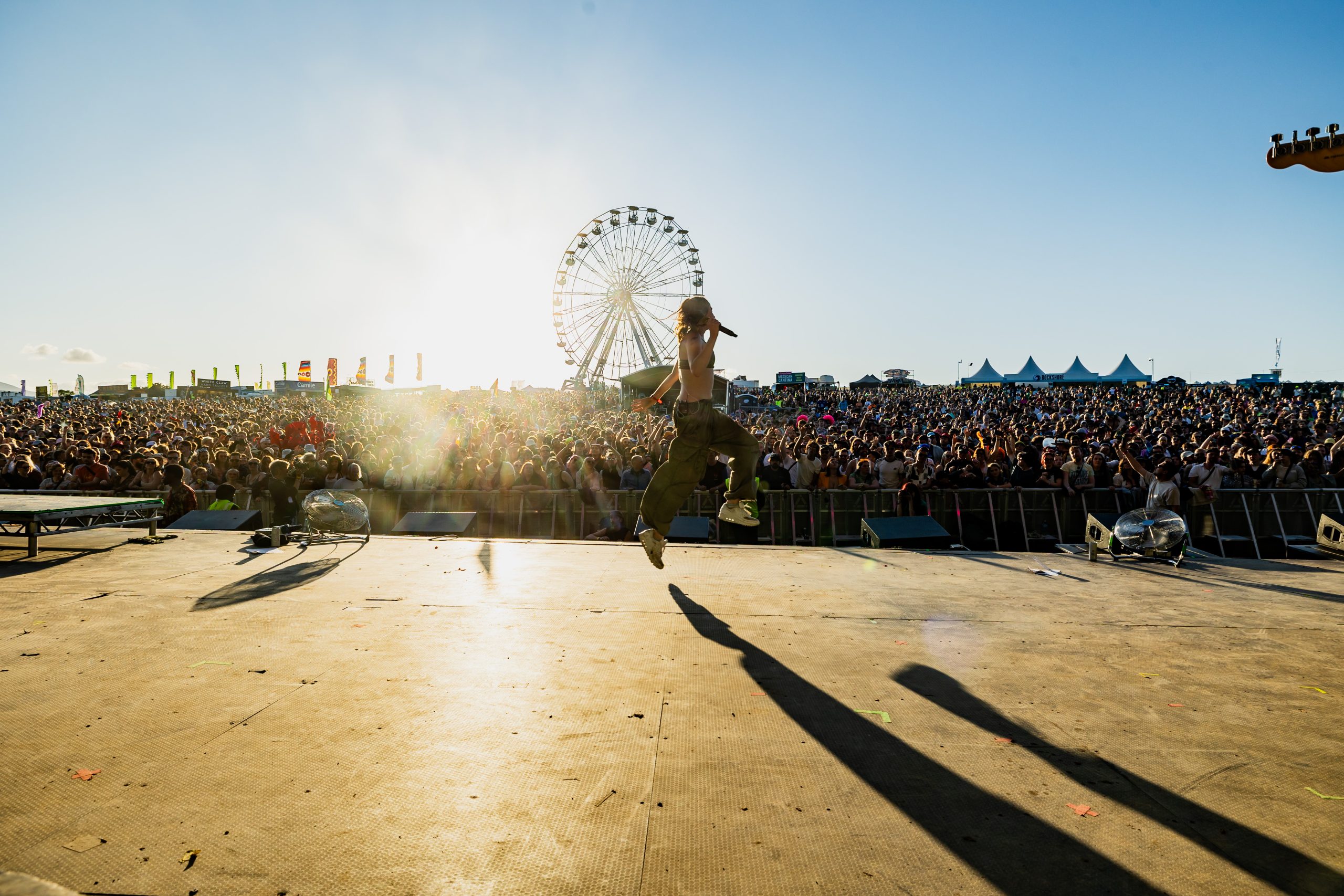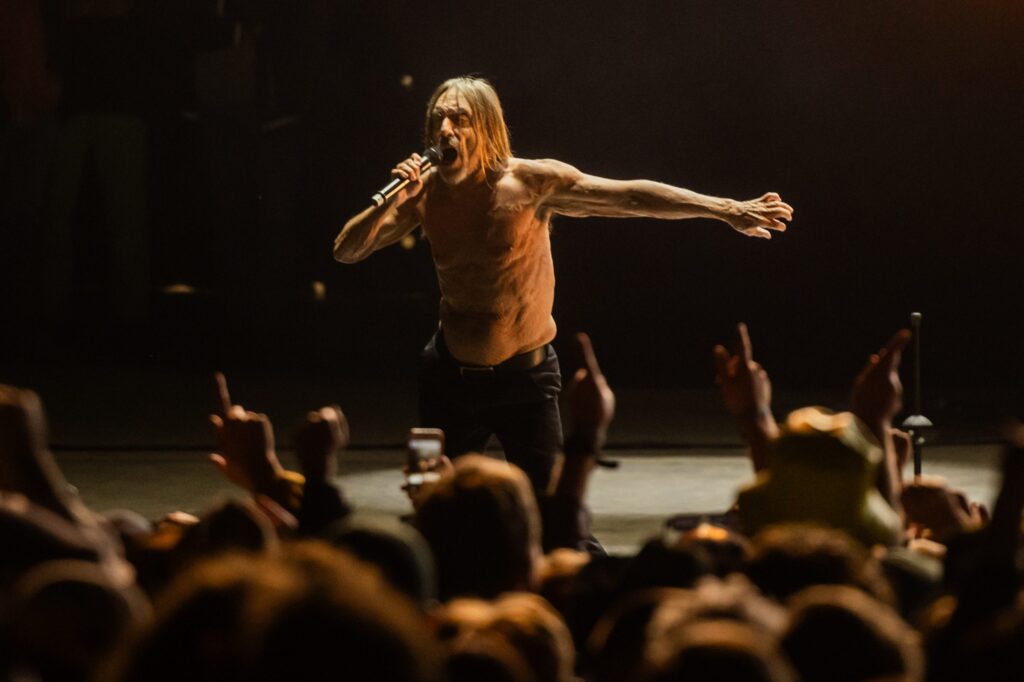
All Together Now
Curraghmore Estate, County Waterford, Ireland
4th-6th August 2023
Things got deliciously weird at times, as the people of Ireland descended upon Curraghmore Estate for the fourth All Together Now festival.
It became clear things were going to be strange when an armchair, seemingly of its own accord, glided over in my direction, stared me down for a moment, and then went off on its merry way to pester somebody else, like an attention-deprived, yappy dog. This was at maybe two o’clock in the afternoon on the Friday, so the tone for the weekend was set early on arrival.
All Together Now 2023 was weirder than in the past, and this is a good thing. I’d attended the first two years, which were far smaller affairs, and though they were lovely, they were still, in many ways, occasions that were finding their feet. Now the festival has matured, which counterintuitively means it has become more childish. Its sense of play has developed. This one was a year for the freaks.

Aside from the roaming armchair — which was remote-controlled and not sentient, as I soon discovered following the initial shock of seeing the thing — the sense of the strange came largely from an area called The Last City. I had a friend working there making costumes, and months ago she’d feverishly told me about what her duties would entail: “We’re going to make mad, post-apocalyptic warrior costumes out of waste!” An eccentric type, I didn’t for a moment question this dear friend’s claim.
I bring this up to illustrate that, while I had a certain sense of what The Last City was going to be — a post-apocalyptic, steampunk vision of a future world destroyed by climate change, or “The Scorch,” where new, strange societies have risen from the ashes of the old to survive in whatever ways they can — my expectations of the area fell wholly short of the mark. There was a high concept at play here, but I underestimated the degree to which that concept would infect our actual, lived behaviour. We really did become the survivors of The Scorch.
When I first arrived in The Last City, early in the day, a rave was taking place as a group of knights with enormous swords did battle. Their leader, The Ultimate Warlord, descended from a great height and began knighting festival-goers as protectors of the city. He implored people to kneel in the dirt, before laying his sword upon their shoulders. A parade was called for, and before long we were advancing through the wider festival site, led by a marching band and acrobats. Packs of scavengers, with dirty faces and dressed in rags, ran around the campsite and stole cans of lager from bewildered people’s hands, presumably because they valued the tin. Bear in mind, many of their victims had just arrived to the festival and likely had no idea The Last City existed, so they wouldn’t have had a notion who these freaks yelling gibberish at them and stealing their cans were.
If all this is difficult to follow, rest assured it was more so in person. Trying to impose logic upon The Last City was a fool’s errand. At times I found myself trying to characterise what I was seeing there — oh, I’m at a rave; oh, I’m watching a piece of performance art; oh, I’m at a sort of comedy performance — but nothing could capture the totality of the experience. This was malleable, plastic weirdness at all times. At night, the hedonism could reach frenzied pitches. Shaman-DJs span strange, tribal tech-house tunes, topless dancers added spice, and mud-covered, sweaty festival-goers moved without inhibition as citizens of The Last City.
Beyond the boundaries of this peculiar enclave, a more conventional music festival was taking place. After the afternoon parade on the Friday, I went to see Irish folk artist Andy Irvine of Planxty, who, aside from being a beautiful musician of some 81 years, is also a man of integrity. When he had a crowd of people generations younger than himself singing All You Fascists Bound To Lose, it struck a note of political optimism that one isn’t liable to hear very often these days.

For a legend of Irish folk music like Andy Irvine to be among the first acts I saw at the festival was fitting, as the weekend was littered with artists that descend from people like him. Later that night, when Lankum played the site’s enormous tent, they did so as spearheads of a new folk wave beloved by younger Irish people who have been worn down by the deteriorated country they have inherited. It should come as no surprise that songs of sorrow and disillusionment and resistance should become popular once again in Ireland at this moment in time.
Lankum, of all the artists working within this general folk idiom, touch on grief and a sense of alienation more than most, but so, too, do they have the ability to rouse. To hear them lead a chorus of thousands singing The Rocky Road To Dublin was a moment that will stick with me. They dedicated their last song, Go Dig My Grave, to Sinéad O’Connor, which, too, was profoundly moving. Having spent the last week or so listening to countless “tributes” from lecherous ghouls in the media attempting to disingenuously align themselves with a woman of such sincere principle, it was powerful to know I was among so many who truly did appreciate Sinéad O’Connor.
As the weekend wore on, it became clear that Sinéad’s presence was everywhere throughout this festival. Walking around, you would so often hear her songs being performed on distant stages elsewhere on the site. Of the tributes I personally witnessed, Lisa O’Neill’s rendition of Black Boys on Mopeds and Villagers’ performance of Nothing Compares 2 U stand out as highlights. When, during the latter gig, it became clear what frontman Conor O’Brien was about to perform, one could feel the crowd almost brace itself. We’d been here before with Conor — the man knows how to induce tears. Having personally held out until this point, I finally broke down. My friend and I, having never cried in front of one another before, stood there with tears streaming down our cheeks, thinking about Sinéad and marvelling at how many thousands of our compatriots were, too. We owe her a lot.

Sinéad O’Connor had been billed to play this same festival in 2022, but her performance never came. The following year, the festival would be defined by our collective grief for her. But what better way to grieve somebody like that than to celebrate, together, the music she left us with? She mattered to so many of us, and to be home in Ireland and to truly feel that was special.
The rowdiest gig of the weekend was unquestionably The Scratch, a band who merge Irish trad with metal. If you’ve never heard the band, you’d be surprised to learn just how much you really did need to hear those two genres meet. Their gig was genuinely wild. Circle pits were generated. Bodies were battered. Voices were strained. Pints were spilled.
My final day began with Irish rapper Kojaque and his friend and collaborator Kean Kavanagh, which took place at a time when the weather was prone to short cycles of intense sunshine and heavy rain. Despite the unease in the sky, the two men on stage exhibited delicious poise over their performance. They brought on Biig Piig for a tune, who herself played wonderfully on the Main Stage later in the day.

Sunday’s headliner was Iggy Pop, who I was seeing perform for the second time in five years. I have seen a few genuine legends play in their older years, but nobody has surpassed Iggy. The power of his anthems has not in the least diminished. His voice remains intact. His body, though aged and weathered, still moves as a core part of his performance. By the end, he appeared twisted and exhausted. He must feel genuine pain for his work now, yet still he retains an aura of immortality. The truth, of course, is that one day we won’t have Iggy Pop, but the fact we still do is worth treasuring.
The deep nights of the festival were spent dancing: Todd Terje sending a massive tent into rapture by dropping ABBA and his own classic Inspector Norse. Daniel Avery overwhelming the senses and emotions with intricate sounds I have no means of describing. The ordained minister Robert Hood banging hard techno into the night as part of his mission to induce soul-searching in his devotees. Smaller DJs with names I’ll never know soundtracking experiences of extreme intensity and bliss. The ground was soft and slippery and so terribly muddy everywhere you went, but there was dancing in every corner of Curraghmore Estate.
All Together Now was beautiful this year. It was creative and weird. It was poignant. At times, it called for grief. At others, it called for nothing but movement. It was wet and windy and sunny and muddy, and it was entirely what so many of us needed it to be.
All Together Now: Web | Instagram | Facebook | YouTube
~
All words by Tiernan Cannon
Photos by Glen Bollard, Aron Cahill and Aiesha Wong.
We have a small favour to ask. Subscribe to Louder Than War and help keep the flame of independent music burning. Click the button below to see the extras you get!
SUBSCRIBE TO LTW


